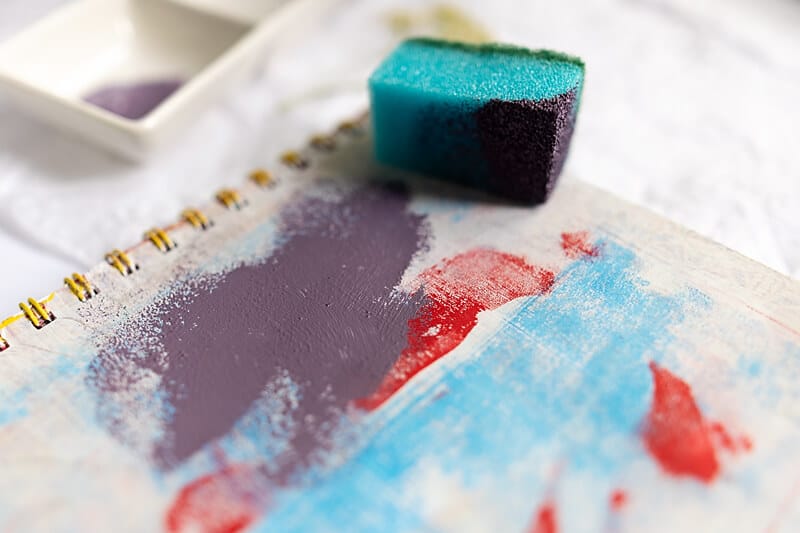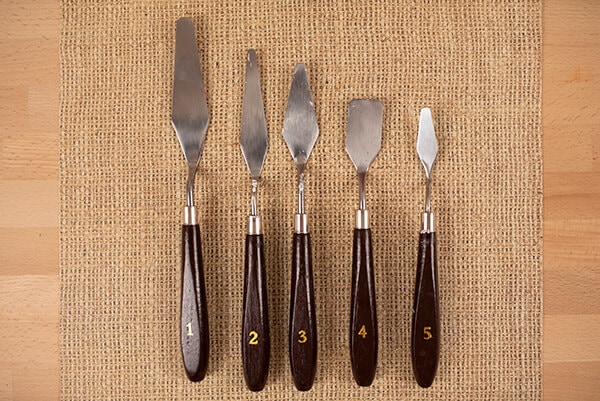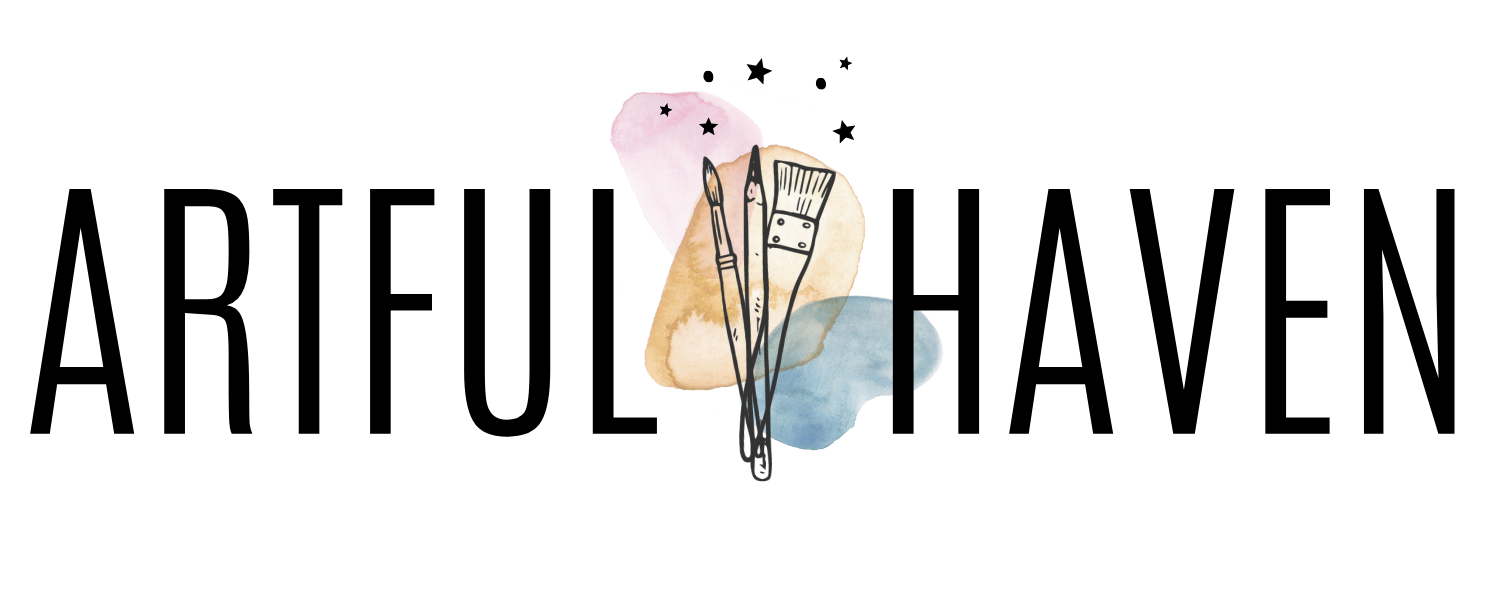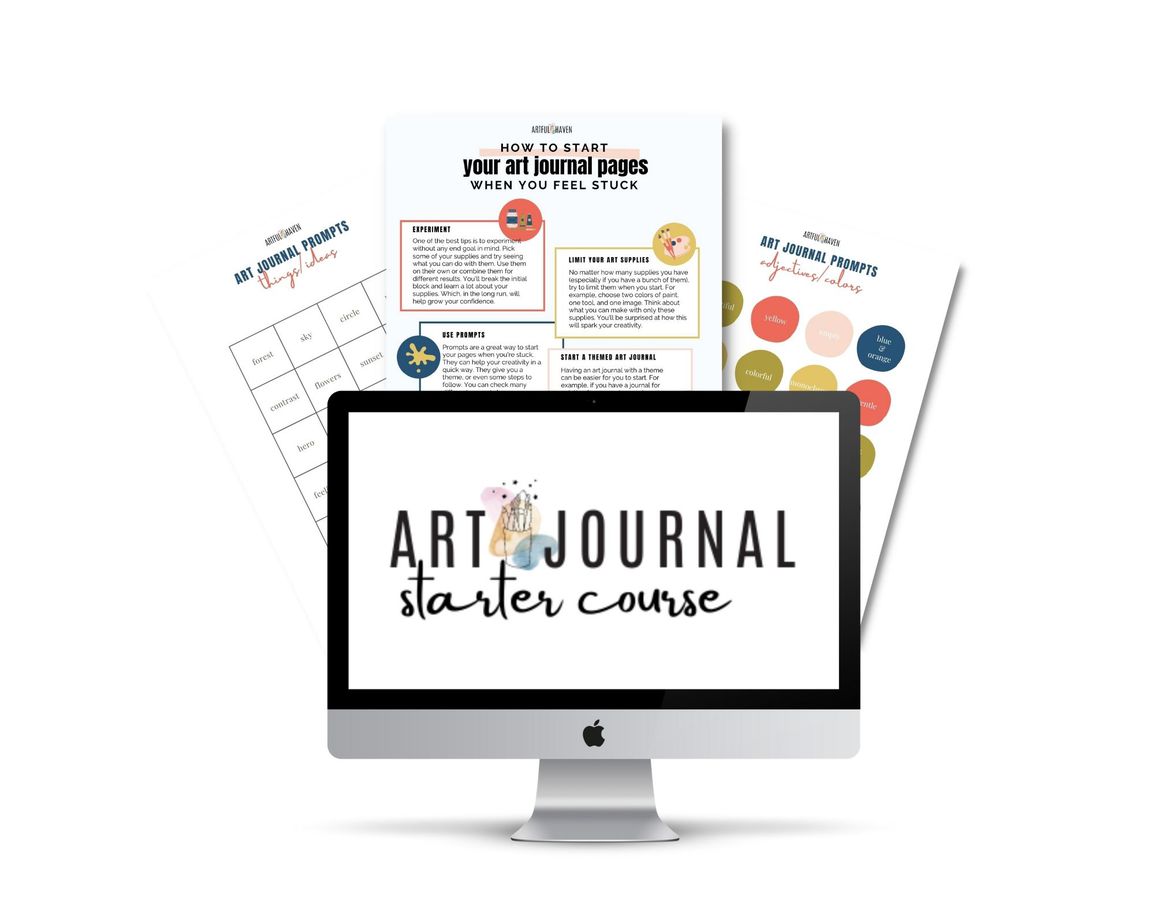13 Ways to Paint Without A Brush in Your Art Journal
The paintbrush is the most common tool for painting, but how to paint without a brush? What other tools are out there? There are many different ways to paint beside a paintbrush. In this blog post, I will share some of my favorite painting tools besides brushes and how they can be used in your next project or your art journal page.
The tools I mention are best used with acrylic paint, but you can put the adventure cap on and experiment all you want.
Disclaimer: Some links in this post may be affiliate links. This means that if you purchase something through that link, I get a small commission, at no extra cost to you.
What to use instead of a paintbrush:
If you don’t have a paintbrush, or you just don’t want to use it, there are some alternatives that work really well.
Some are great for covering large areas, while others can serve as stamps for backgrounds and making patterns.
You can cover large areas with:
- sponges
- brayer
- your fingers
- baby wipes
- palette/painting knives
- credit card or gift card
- straws
- brush pens (although best for painting in shapes and lines)
Create stamped images and patterns with these tools:
- plants
- bubble wrap
- q-tips
- toilet paper rolls
- cookie cutters
- bottle caps
How to paint without a brush using other tools
Sponges
Sponges are a great substitute for paint brushes because they can be used to create different textures and are easy to work with. There are many different shapes, sizes, and materials that you could use such as foam paintbrush sponges or ordinary kitchen sponges. They’re easy to clean by tossing them in soapy water and just squeezing the paint out of them. Just remember to do it right after you finish painting.

Dabbing paint with a sponge creates textures and patterns. Circular motions can be used as well, but the markings won’t be so pronounced.
Sponges are a great way to make the paint more concentrated. They also absorb some paint making it necessary for you to frequently add paint as you work on your page so that there’s always plenty available.
Another great sponge for painting is the make-up sponge. This is a soft sponge and you can also paint with it by dabbing or circular motions. Furthermore, you can cut it out in different shapes and create interesting stamping effects.
Brayer

The brayer is an excellent tool for painting and covering larger areas. It’s commonly used with acrylic paint, but if you’re feeling up to it, experiment with watercolors as well.
Painting with a brayer often creates texture which is adored by most art journalers out there. The paint could also drip off and create an interesting effect on your page as you work.
Also, always clean your brayer after you finish with painting because the paint will accumulate on the surface and then dry, making paint harder to pick up the next time you use it.
Your fingers
It might seem silly and childish but you should try painting with your fingers, too. It can be a lot of fun and finger-painting adds texture and interest to your journaling pages.
Also, you can sometimes control the paint much better with your fingers than you can with a paintbrush.
Painting with your fingers also gives you the freedom to paint any way you want and paint directly onto the paper.
Baby wipes
We all have them in our homes and they’re perfect for paint-smudging. You can have an even paint surface by smearing paint with a baby wipe. They’re wet, soft, and will create a similar soft effect as well. They can smear the paint really well due to their wetness.
Another great idea is to use them with stencils. For example, put some acrylic paint on the page, cover the page with a stencil and then use the baby wipes to lift off the paint through the stencil.
The downside is that by using the wipes, you create paper waste. So, a great idea would be to let those used wipes dry and later used them in your mixed media projects.
Palette/Painting knives

Paint brushes are not the only paint application tool. Palette and painting knives have been used forever for transferring paint to a surface. Palette knives come in many shapes and sizes.
You paint with them by applying paint to the paper and then, using a flat side of the knife or backside of the blade in long strokes (or short ones). The paint can be applied thickly – so this is sometimes more about texture than it is about coverage.
Old credit/gift card
What if I don’t have a painting knife, you ask. Well, you can use an old credit card that works perfectly.
Simply put paint on the paper and use the card to scrape the paint across your page. This technique can be used in a variety of ways: for texture, small details, or even as an alternative brush stroke when painting with acrylic paint.
Straws
With straws, you can paint by blowing paint onto the page.
This technique can be a little tricky for beginners and you may want to practice for a while, but it’s all in experimenting, right?
I find that this technique works best with watercolors and ink and not so much with acrylic paint because it’s thicker and won’t easily move across the paper.
What I usually do is put some watercolor on the paper and then spread it in any direction with the straw.
The paint will then form patterns in different shapes depending on how you blow.
You can also try painting just by blowing air onto wet paint on paper, but I find this harder to control.
Besides straws, I find another cool tool for this technique. It’s a camera lens cleaner and does a marvelous job without you having to blow air so it’s easier and more practical. See pic below.

Brush pens
Brush pen: a paintbrush on the go! It is perfect for those small details and lines in your project, or for when you want to paint with acrylic paint but don’t have a paintbrush handy.
This paint brush pen is a favorite among artists because it can be used to create beautiful gradients and even highlights.
It also has the paintbrush-like feel of traditional brushes, so you may find that your art journaling flows more easily when using this type of paint tool.
I’ve found that the most popular brand is Tombow. They make brush pens in a variety of colors.
Plants
I tried using leaves and flowers to paint and I must say I got neat effects.
You can use leaves as a stamp for wonderful nature prints: cover it with acrylic paint and stamp onto the paper. Make it more fun and add different colors for a more interesting effect.

I find that flowers work well for painting as they leave beautiful patterns on the paper. You dip the flower’s petals into the paint and stamp to get a lovely effect.
You can also try using small flowers for dotting – I would just dip them in paint, lay down dots on my paper, then dab off any excess paint to make it look like polka-dots.
Bubble wrap
Yes, you can paint with bubble wrap. It creates paint-filled bubbles that can be used in many ways, like stamping, for example.
Painting with bubble wrap is a lot of fun, and you can experiment with different paint colors and paint thicknesses to create the desired effect on your page.
And this tool is marvelous for creating patterns.
Q-Tips
A fun little tool for painting details. It’s pretty straightforward: dip it in paint and just experiment on the paper.
You can also paint with it by using strokes like painting with a brush, or you can just paint small dots with it. Dotting is great for smaller details on your art journal pages.
Toilet paper rolls
Maybe you can’t paint large areas with toilet paper rolls but you can stamp paint with them. This creates interesting circles and depending on the amount of paint you pick up with the roll.
You can also create more stamp shapes, for example, hearts, if you make that shape with the roll.
Also, use this technique for creating backgrounds or patterns on your pages.
Cookie cutters
Similar to paper rolls, you can use cookie cutters to paint by stamping the paint on your page.
Again, depending on how much paint is picked up with the cutter will determine whether it’s a light or dark circle and what shape that appears.
This technique also works for backgrounds and patterns and it may be more fun if you have different shapes of cutters.
Bottle caps

As same as toilet paper rolls or cookie cutters, you can use bottle caps for creating small marks on your page and different patterns. Also, if you collect different sizes of caps, you can really go for it and make wonderful and interesting backgrounds or add details.
How to paint without a brush – recap
In conclusion, painting without a paintbrush can be a fun and creative way to make backgrounds, stamped images, and paint shapes or patterns. There are many different tools for you to use and paint with.
So, if you wonder about painting tools besides brushes, look at what you have around the house and just, well…paint. You’ll be happy with your results.
Some artists found a way of painting without paintbrushes by using different techniques and tools and their art pieces look amazing, so don’t be afraid of experimenting, who knows where it will take you.


